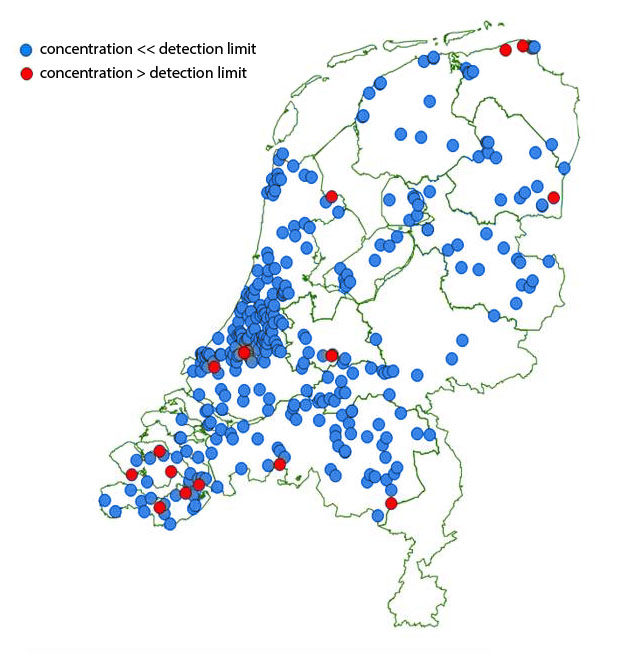The phenylpyrazole insecticide fipronil is used in Dutch agriculture in seed coating of cabbage, onions and leek, but was also illegally used as treatment against poultry red mite. Crustaceans and aquatic insects have been shown to be highly sensitive to fipronil and its stable degradation products. An environmental quality standard (EQS) for fipronil in Dutch surface water has been set at 0.07 ng / L. As a result of limitations in analytical methodology, with detection limits usually at 10 ng/L or higher, Dutch Water Boards have been unable to demonstrate fipronil in surface water at concentrations up to 150 times above EQS, creating blind spots in most areas of the country. However, measurable fipronil concentrations of up to 130 ng / L have been recorded in onion cultivation areas in the southwestern province of Zeeland. Similar fipronil concentrations in surface water have been observed in California. Given the cumulative nature of toxicity, the reported fipronil emissions are bound to cause lethal effects in aquatic organisms.
Source:
Tennekes HA (2018) Fipronil in Surface Water: An Environmental Calamity Remaining Under Radar in the Netherlands. J Ecol Toxicol 2: 111.

- Login om te reageren
